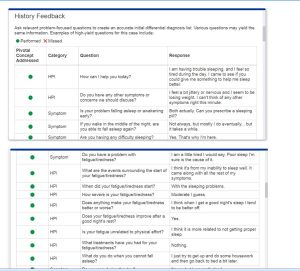Preparing the Assignment
Follow these guidelines when completing each component of the assignment. Contact your course faculty if you have questions.
General Instructions
Access i-Human by clicking the link below. Click the blue bar to launch the activity in a new browser window. The case does not need to be completed in one sitting; it can be re-entered at the same case location at a later time.
All graded documentation, including the management plan, must be completed within the i-Human platform. Follow the i-Human Documentation GuideLinks to an external site. to complete your client’s electronic health record (EHR) and management plan. Use current APA Style Standards to format citations and references in the management plan and reflection. Use APA StyleLinks to an external site. and APA Academic WriterLinks to an external site. for formatting and grammar assistance.
Include the following sections (detailed criteria listed below and in the Grading Rubric):
Complete the following components in the i-Human Virtual Patient Encounter for the required case addressing the endocrine system.
- Focused Health History: Complete a focused health history. Scores are automatically calculated within the i-Human platform when the health history is submitted.
- Focused Physical Exam: Complete a focused physical exam. Scores are automatically calculated within the i-Human platform when the health history is submitted.
- EHR Documentation-Subjective Data: Document the history of the present illness (HPI) and focused review of systems (ROS). Documentation must be:
- accurate
- detailed
- written using professional terminology
- pertinent to the chief complaint
- includes subjective findings only
- EHR Documentation-Objective Data: Document physical exam findings. Documentation must be:
- accurate
- detailed
- written using professional terminology
- pertinent to the chief complaint
- include objective findings only
- Problem Statement: Document a brief, accurate problem statement using professional language. Include the following components:
- name or initials, age
- chief complaint
- positive and negative subjective findings
- positive and negative objective findings
- Differential diagnosis (DDx): Select the most appropriate differential diagnoses for the encounter. Your score will automatically calculate after the focused physical exam is submitted.
- Differential diagnosis ranking: Rank the differential as lead and alternate diagnoses
- Must Not Miss: Identify the must not miss (MNM) diagnoses
- Diagnostic tests: Select the appropriate diagnostic tests for the virtual patient. Once selected, review the results provided.
- Management Plan: Use the expert diagnosis provided to create a pertinent comprehensive evidence-based management plan. If a specific component of the management plan is not warranted (i.e., no referrals are appropriate for the virtual patient) document that no intervention is warranted. Include the following components:
- diagnostic tests
- medications: write a specific prescription for each medication, including over-the-counter medications
- suggested consults/referrals
- client education
- follow-up, including time interval and specific symptomatology to prompt a sooner return
- cite at least one relevant scholarly source as defined by program expectationsLinks to an external site.
- Click “Submit” once the case is complete and take a screenshot or snippet of the i-Human Virtual Patient Encounter report to upload to the dropbox. Then submit both the screenshot or snippet of the i-Human Virtual Patient Encounter report and your completed reflection Word document to the Week 3 dropbox.
- Reflection: Address the following questions:
- Both the diagnostic testing and treatments available for this client’s diagnosis can be very expensive. How would your treatment plan change if your client did not have insurance? What resources are available in your area to support a client with these diagnostic and treatment needs?
- Include the following components:
- write 150-300 words in a Microsoft Word document
- demonstrate clinical judgment appropriate to the virtual patient scenario
- cite at least one relevant scholarly source as defined by program expectations
- communicate with minimal errors in English grammar, spelling, syntax, and punctuation
Solution:

Click to purchase full solution